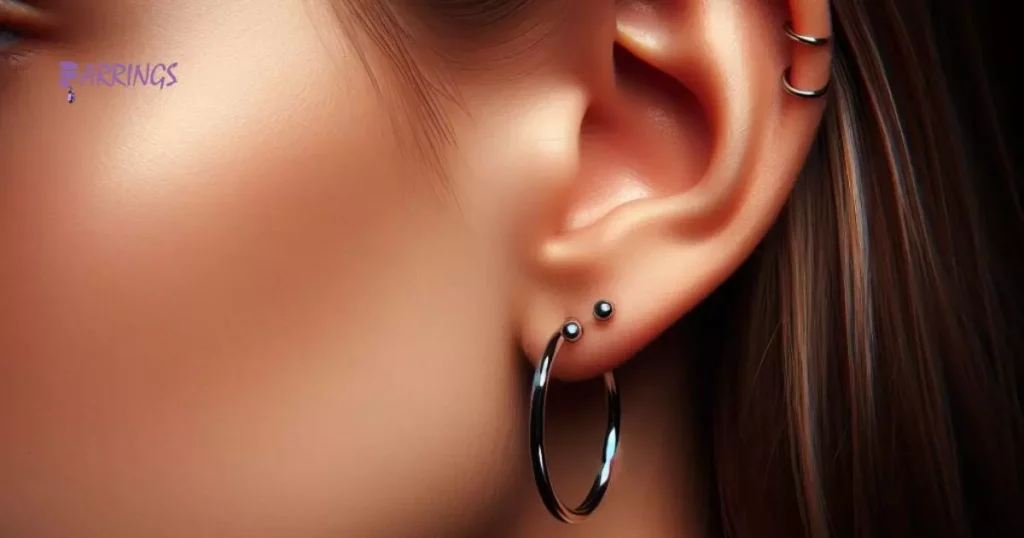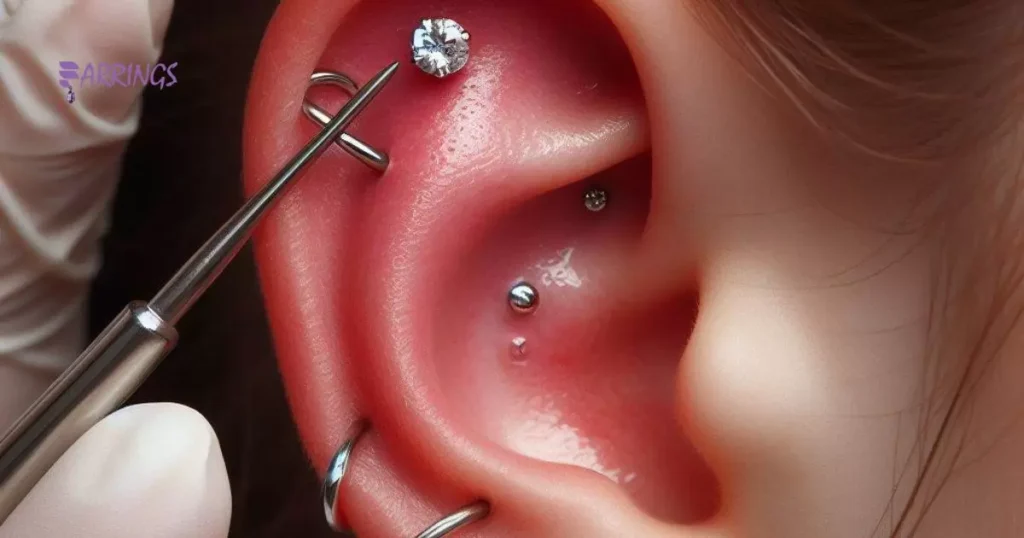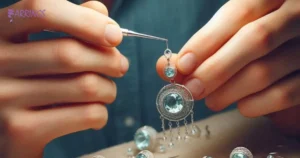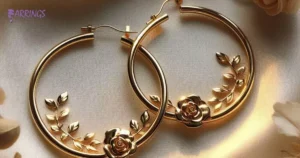It’s generally recommended to wait at least 6-8 weeks before changing new ear piercings. You can carefully change earrings after 1 week if the piercing is fully healed and not irritated. Gently clean the area, grasp the post, and slowly pull the earring straight out.
Just got a new ear piercing and can’t wait to switch up your look. Can I change my earrings after 1 week? We know the temptation, but it’s important to be patient and let your piercing fully heal before swapping out the jewelry.
Changing a new ear piercing too soon can lead to complications, so patience is key. While the urge to switch up your look may be strong, it’s important to let the piercing fully heal before attempting to change the jewelry.
Key Takeaways
- Wait until your piercing is fully healed before changing your earrings.
- Maintain cleanliness to prevent infections and promote healing.
- Seek advice if you need more time to change earrings.
- If you experience discomfort or signs of infection, hold off on changing jewelry.
- Prioritize safety rushing the process can lead to complications, so proceed with caution.
Understanding the Piercing Healing Process
| Stage | Description |
| Inflammation | Initial redness and swelling |
| Granulation | Formation of new tissue |
| Epithelialization | Surface healing and closure |
| Maturation | Strengthening of healed tissue |
| Final Healing | Complete closure and stability |
The piercing healing process is essential for anyone considering getting a new piercing. Initially, your body sees the piercing as a wound, triggering a natural healing response. This involves the formation of a scab to protect the area and prevent infection.
Rushing to change earrings too early can hinder the healing process of a new piercing. Patience and following aftercare instructions are crucial for proper healing. Avoiding unnecessary touching and adhering to saline cleaning routines twice a day help prevent complications.
Risks Associated with Changing Earrings Too Early
Changing earrings too early can pose several risks to your ear health. Firstly, premature removal can disrupt the healing process, leading to irritation and potential infection. Abruptly introducing new earrings may cause trauma to the piercing site, increasing the likelihood of swelling and discomfort.
Hastily switching earrings can result in the trapping of bacteria or debris, heightening the risk of complications. Properly timed earring changes, typically after the initial healing period, help minimize these risks and promote optimal healing.
Signs Your Ears Are Ready for an Earring Change

If your earlobes feel comfortable and free from any swelling or tenderness, it’s a positive sign indicating they might be ready for an earring change. If there’s no discharge or crusting around the piercing site, it indicates that the healing process is progressing well.
You may also notice that the redness around the piercing has subsided, another indication that your ears are healing nicely and may be ready for a new earring. If you can move your existing earrings without discomfort and they rotate freely, it suggests that the piercing has stabilized and is less prone to irritation.
Tips for Changing Earrings for the First Time
When changing earrings for the first time, follow these simple tips for a smooth experience:
Wait a week: Give your piercing time to heal before changing earrings to avoid irritation or infection.
Cleanse your hands: Wash your hands thoroughly with soap and water to prevent introducing bacteria to the piercing site.
Choose the right time: Opt for a time when you’re relaxed and won’t be rushed to ensure a careful and gentle process.
Select high-quality earrings: Pick earrings made of materials like surgical steel, gold, or titanium to minimize the risk of allergic reactions or irritation.
Prepare the new earrings: Disinfect the new earrings with rubbing alcohol or an antiseptic solution before inserting them.
Gently remove the old earrings: Slowly and carefully slide out the old earrings, avoiding any twisting or pulling that could cause discomfort or injury.
Insert the new earrings with care: Hold the earring by the post and gently guide it into the piercing, ensuring it goes in straight and without force.
Cleanse the area: After changing earrings, gently cleanse the pierced area with saline solution to promote healing and prevent infection.
By following these tips, changing earrings for the first time can be a simple and stress-free process, allowing you to enjoy your new jewelry safely and comfortably.
Choosing Earrings for Newly Pierced Ears
When selecting earrings for newly pierced ears, prioritise lightweight and hypoallergenic options. Opt for studs or small hoops made of materials like surgical stainless steel or titanium to minimize irritation and promote healing.
Avoid heavy or dangling styles that could tug on the piercing and cause discomfort or complications. Consider the closure mechanism of the earrings. Choose designs with secure backs or clasps to prevent accidental loss or snagging on clothing or hair.
Changing Earrings After Piercing Heals
When considering changing earrings after a week of piercing, it’s crucial to ensure that the piercing has fully healed. Waiting for the appropriate healing time minimizes the risk of infection or irritation.
Always consult with a professional piercer or healthcare provider before making any changes to your earrings. Once the piercing has healed sufficiently, changing earrings can be done carefully to avoid any discomfort or complications.
Cleanliness is key; make sure to thoroughly wash your hands and sanitize the new earrings before inserting them. Gently remove the current earrings, avoiding any twisting or pulling, and replace them with new ones.
Upper Ear Lobe Piercing Healing Time

Upper ear lobe piercing typically takes around 6 to 8 weeks to heal fully. During this time, it’s crucial to maintain proper aftercare to prevent infections and complications.
Clean the piercing twice daily with a saline solution and avoid touching it unnecessarily. Refrain from changing the earring until the piercing has fully healed to avoid irritation or injury to the delicate tissue.
If you experience excessive redness, swelling, or discharge, consult a professional piercer or healthcare provider promptly. Patience and proper care are key to ensuring a successful healing process for your upper ear lobe piercing.
Frequently Asked Questions
What if I change my earrings too early?
Changing your earrings too early can increase the risk of irritation and infection in the piercing.
Is it OK to change earrings after 1 week?
It is not recommended to change earrings after just one week as it may disrupt the healing process of the piercing.
Can I leave my earrings out for a week?
It’s generally safe to leave your earrings out for a week, but it may depend on how long you’ve had the piercing and its stage of healing.
Conclusion
The decision to change your earrings after one week depends on various factors. While some piercings may tolerate it well, others may still be in the delicate healing phase. It’s crucial to listen to your body and follow proper aftercare guidelines to avoid complications.
Rushing the process could lead to infections or prolonged healing times. Always consult with a professional piercer if you’re unsure about changing your earring too soon. Patience and caution are key to ensuring a successful and comfortable piercing experience.











